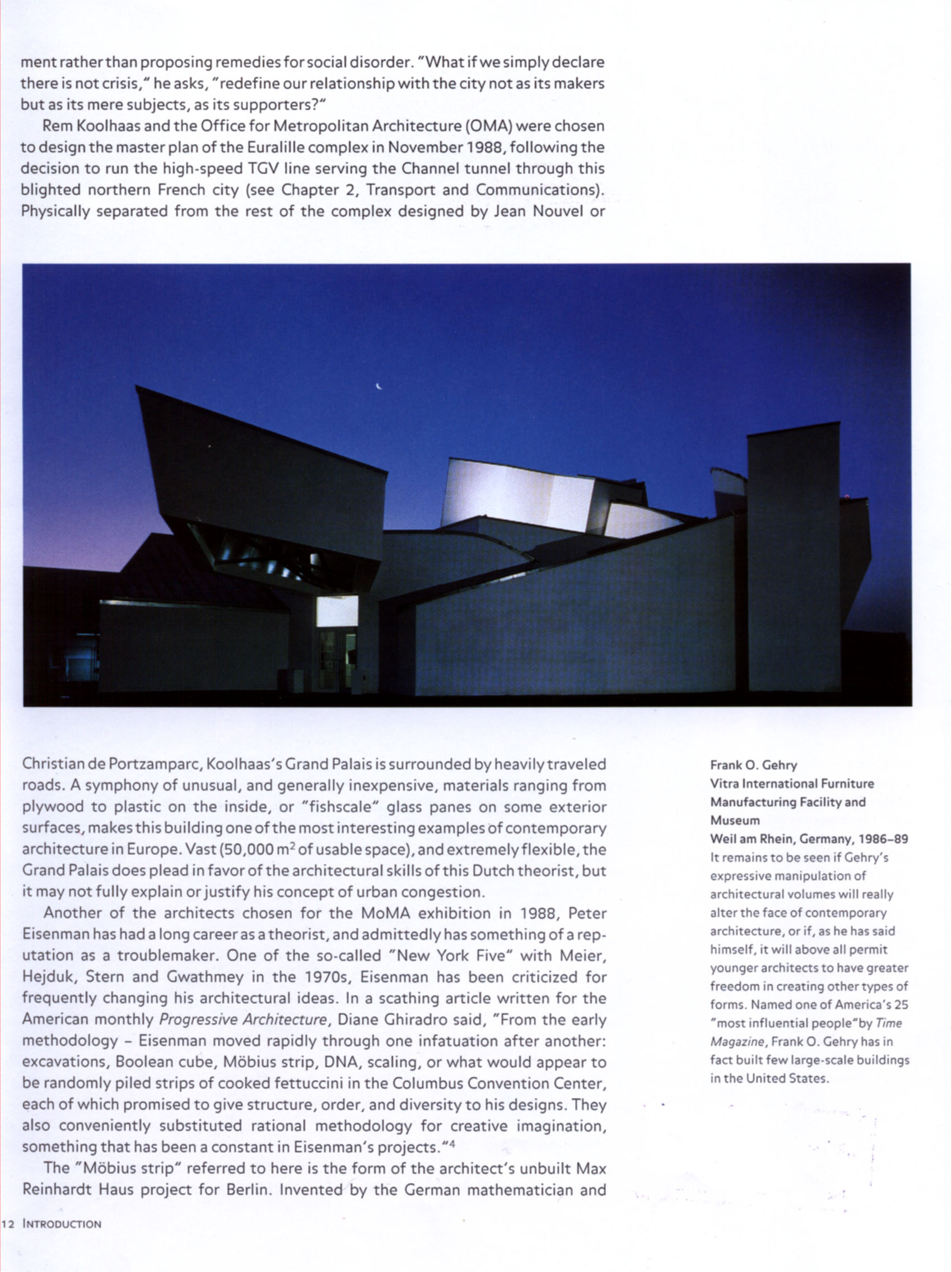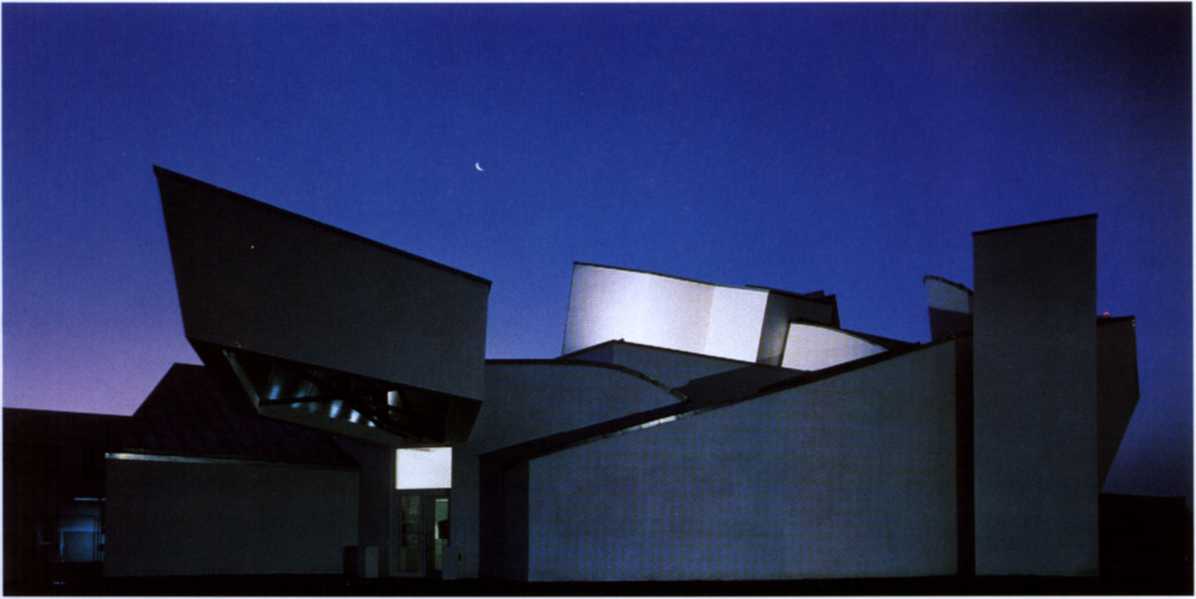New Forms Taschen 010

ment ratherthan proposing remediesforsocial disorder. "What if wesimply declare there is not crisis," he asks, "redefine our relationship with the city not as its makers but as its mere subjects, as its supporters?"
Rem Koolhaas and the Office for Metropolitan Architecture (OMA) were chosen to design the master plan of the Euralille complex in November 1988, following the decision to run the high-speed TGV linę serving the Channel tunnel through this blighted northern French city (see Chapter 2, Transport and Communications). Physically separated from the rest of the complex designed by Jean Nouvel or

Christian de Portzamparc, Koolhaas's Grand Palais is surrounded by heavily traveled roads. A symphony of unusual, and generally inexpensive, materials ranging from plywood to plastic on the inside, or "fishscale" glass panes on some exterior surfaces, makes this building one of the most interesting examples of contemporary architecture in Europę. Vast (50,000 m2 of usable space), and extremely f lexible, the Grand Palais does plead infavorof thearchitectural skillsof this Dutchtheorist, but it may not fully explain or justify his concept of urban congestion.
Another of the architects chosen for the MoMA exhibition in 1988, Peter Eisenman has had a long career as a theorist, and admittedly has something of a rep-utation as a troublemaker. One of the so-called "New York Five" with Meier, Hejduk, Stern and Gwathmey in the 1970s, Eisenman has been criticized for frequently changing his architectural ideas. In a scathing article written for the American monthly Progressive Architecture, Dianę Ghiradro said, "From the early methodology - Eisenman moved rapidly through one infatuation after another: excavations, Boolean cube, Móbius strip, DNA, scaling, or what would appear to be randomly piled strips of cooked fettuccini in the Columbus Convention Center, each of which promised to give structure, order, and diversity to his designs. They also conveniently substituted rational methodology for creative imagination, something that has been a constant in Eisenman's projects."4
The "Móbius strip" referred to here is the form of the architect's unbuilt Max Reinhardt Haus project for Berlin. Invented by the German mathematician and
Frank O. Gehry Vitra International Furniture Manufacturing Facilityand Museum
Weil am Rhein, Germany, 1986-89
It remains to be seen if Gehry's expressive manipulation of architectural volumes will really alter the face of contemporary architecture, or if, as he has said himself, it will above all permit younger architects to have greater freedom in creating other types of forms. Named one of America's 25 'most influential people"by Time Magazine, Frank O. Gehry has in fact built few large-scale buildings in the United States.
}
12 Introduction
Wyszukiwarka
Podobne podstrony:
56746 New Forms Taschen 151 shape that an architect or an artist can imagine, so why not a vividly c
69218 New Forms Taschen 104 built, Ando seeks to make the visitor aware that he is entering a sacred
New Forms Taschen 158 Cuba, in January 1995 gave rise to his Havana Project, which is a proposal for
46950 New Forms Taschen 215 BiographiesTadao Ando Boro mOukJ m 1941, Tadao Ando wat seif educated at
47870 New Forms Taschen 214 Notes 1 Wigloy, Mark, in: Deconstruc-twist Architectur
więcej podobnych podstron